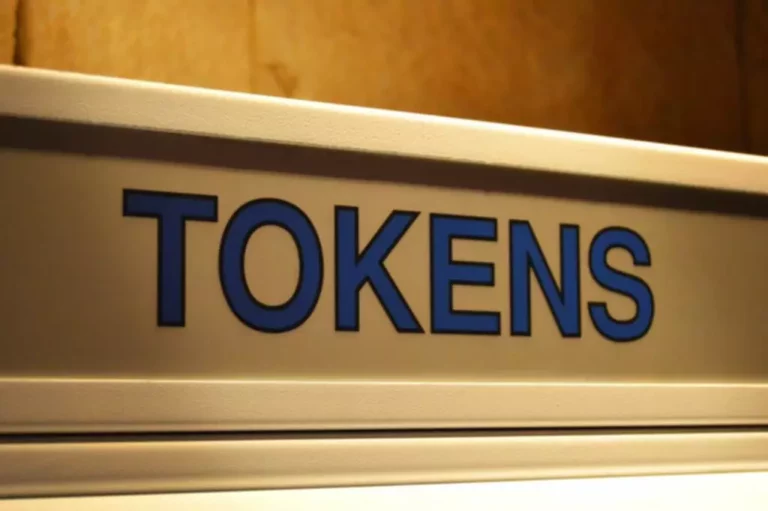Sec Employees Issues Statement On Proof-of-work Crypto Mining Activities
The elected delegates take turns proposing and validating blocks of transactions. Unlike traditional Proof-of-Work (PoW) mechanisms, where miners compete to resolve advanced puzzles, DPoS streamlines the block manufacturing course of, making it more predictable and efficient. The selection of consensus mechanism performs a pivotal position in shaping the traits of a decentralized network. Consensus mechanisms determine how agreement is reached among nodes within the network, making certain the security, reliability, and integrity of transactions. Let’s look at the intricacies of varied consensus mechanisms their unique options and look at their influence on blockchain ecosystems. PoS developed as a low-cost, low-energy consuming different to the PoW algorithm.

Blockchain And Cryptocurrency
For this cause, many argue that DPoS ought to be thought-about a Proof-of-Authority (PoA) system. Delegated proof of stake represents an evolution that might assist blockchain technology obtain mainstream adoption. By boosting pace, efficiency and scalability compared to older POW fashions, DPOS permits blockchains to handle the transaction volumes required for large Digital wallet scale commercial applications. However, since the number of delegates is proscribed, the rewards are distributed among fewer nodes. This offers stronger incentives for delegates to provide honest validation providers on behalf of the network.

As A Substitute of miners fixing complicated mathematical equations, like in a PoW consensus method, they stake a fixed quantity of coins required by the community that permits them to validate transactions. Whereas Bitcoin reaches an settlement through Proof of Work (PoW), there are a few other ways blockchain networks can come to a consensus. EOS – Created by Daniel Larimer and Block.one, EOS is an open-source blockchain that gives scalability with low latency. Beneath are examples of the CommonNames utilized in delegated digital signature certificates. Algorand is a decentralized functions (dApp) platform launched in June 2019 by MIT Computer Science professor Silvio Micali.
Delegated PoS includes a voting and delegation process that also includes incentives for customers. The incentive mechanism helps in securing the community with the collateral staked by customers. For instance, validation in both NPoS and DPoS blockchains revolve around two different community users, the participation of which is centered around voting.
- Some networks also implement vote decay to encourage ongoing participation.
- A Federal PKI role-based delegated digitalsignature certificates is a technological solution that may facilitate this delegation ofsignatory authority.
- This streamlined strategy enhances scalability and effectivity, balancing decentralization and pace.
- The concept behind the distributed ledger is to have copies of the blockchain held by a number of computer systems (called nodes) in numerous areas.
- Guaranteeing complete safety is crucial as you navigate the vast crypto ecosystem.
Naturally, trustworthy nodes (ones with higher popularity scores) stand a greater probability https://www.xcritical.com/ of getting elected as a delegate and incomes extra rewards. Delegated Proof of Stake (DPoS) is a consensus mechanism particularly developed for blockchain networks, evolving from the classic Proof of Stake (PoS) approach. Its purpose is to beat the limitations of PoS and create more efficient blockchain networks. Moreover, witnesses (block producers) are current to safe and govern the community. If they add a block, they will keep away from shedding their likelihood to be re-elected as future delegates.
Perceive how locking cryptocurrencies helps safe the network, contributes to its consensus, and earns individuals staking rewards. The introduction of DPoS has been an necessary structural innovation, which, in concept, permits blockchain protocols to work quickly and efficiently. Still, some enhancements should be utilized as exposure to centralization remains to be a very high threat and the validator nodes are exposed to corruption. Firstly, the number of nodes could presumably be increased, with the goal to try to distribute the network more, and secondly the extent of competitors between them could be elevated in a while. The actual economics, incentives and penalties vary between DPOS implementations but are designed to maximize security and honesty from elected delegates.
On the other hand, delegated proof of stake brings in elected witnesses and delegates to do the heavy work. The democratic selection of witnesses and delegates alongside an incentivized method for transaction verification serves as hanging value benefits in delegated PoS mechanisms. The elected delegates in delegated proof of stake consensus mechanism serve the position of block producers.
Variations Between Proof-of-stake (pos) And Delegated Proof-of-stake (dpos)
Otherwise, dishonest nodes might be voted out and changed by trustworthy nodes within the next election. While PoW prioritises safety by way of computational strength, PoS and DPoS stand out for his or her vitality effectivity and scalability. DPoS distinguishes itself with its governance structure, giving customers a critical function, but demands strong group engagement to minimise centralisation dangers. The discussions on DPoS usually paint it as a greater alternative than the Proof of Stake consensus algorithm.

Disadvantages Of Dpos
Whereas all users are able to stake their cash, they can’t immediately participate within the consensus process as validators. Whereas these dangers do exist, they are often minimized through careful protocol design and governance. Total, DPOS nonetheless provides a extra decentralized mannequin than POW mining pools or permissioned blockchains. Ongoing research and evolution of DPOS aim to maximise decentralization and security. Active delegates that take part in block manufacturing and validation are rewarded for their service within the type of block rewards and transaction fees, equally to miners in POW blockchains. Thanks to these advantages, delegated proof of stake has quickly emerged as a quantity one consensus mechanism for blockchain platforms across finance, supply chain, gaming and other industries.
PoS cash utilizing masternodes embody Dash, PIVX, SysCoin (SYS), and Energi (NRG). By offering varied methods to choose out validators and take part within the consensus course of, these proof of stake variations enable flexibility in designing and implementing blockchain solutions. Every has distinctive advantages and downsides that ought to be considered when evaluating network suitability. Nonetheless, this intensive communication course of creates computational overhead. The processing energy required for every validator to manage those connections becomes a bottleneck, limiting the practical variety of individuals. As a outcome, this model typically serves in permissioned networks like Ripple or protocols designed to host a quantity of smaller blockchains just like the Cosmos ecosystem.
The delegated PoS consensus protocol comes with the advantage of serving to users spend coins for various delegates. After choice, the delegates can implement crucial decisions for the whole network. The following discussion offers you an introductory information on delegated proof of stake algorithm and the means it works. Staked is doubtless one of the more in style and largest staking providers out there, with over $2B worth of staked tokens and cash underneath administration. According to Stakingrewards, Staked has round 10,000 energetic stakeholders participating in numerous blockchain networks.
It solely means that similar to well-established PoW networks, PoS networks are almost immune to those assaults. Given that every one nodes inside the PoS community should stake a minimal quantity of native cash or tokens, it goes to be foolish to attempt to jeopardize the value of your funding. In the introductory section above, we talked about that Bitcoin makes use of a Proof of Work (PoW) consensus mechanism. Ethereum, the second-largest blockchain network after Bitcoin by way of market capitalization, currently makes use of PoW. Nonetheless, Ethereum’s core builders are currently engaged on a core upgrade that may see Ethereum migrate from PoW to Proof of Stake (PoS). The process through which the consensus is reached varies between varied initiatives and networks.
DPoS was conceptualized as an enchancment over conventional consensus mechanisms similar to Proof of Work (PoW) and Proof of Stake (PoS). PoW, used by Bitcoin and a lot of early blockchains, relies on computational power to unravel advanced mathematical puzzles, which could be energy-intensive and gradual. In Accordance benefits of delegated proof-of-stake to crypto updates as of October 13, 2023, the digital asset platform LBank Trade enabled the itemizing of Ethereum Categorical (ETE).
